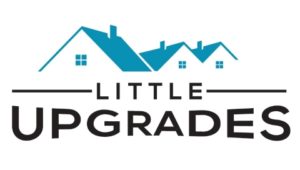
If you want to try using washi tape to spruce up your home, then one of the first questions you’ll probably ask is “does washi tape damage walls?”
Washi tape usually does not damage walls by chipping the paint. But, washi tape may leave small lines of adhesive residue, depending on the brand that you use, and how long it is attached. Washi tape may also create lines under the tape on walls that receive direct sunlight.
Take a look at the video and photos below, and you’ll get a much better idea of what to expect with your washi tape. Let’s get to it!
Table of Contents
Does Washi Tape Damage Walls

The 1-Month Test
In the video below, we try removing some washi tape that we’ve had on our walls for about the last month.
We’re going to be looking for a couple of things. In particular:
- How easy it is to remove the tape?
- Does it leave any residue?
- Is the paint around the tape faded significantly?
- Can we re-use the tape after removing it?
Check it out below, and if you want to see more videos of little upgrades you can try in your home, subscribe to our channel!
If you’re not into watching videos, here are the answers to the 4 questions above:
1. How easy was it to remove the washi tape?
We had two different brands of washi tape. The narrower strips of tape that we tried were much easier to remove than the wide strips.
I’m not sure exactly why the wider strips of tape were harder to remove, but if I had to guess, I’d say they probably just use a different formula for their adhesive.
2. Did it leave any residue?
This was the surprising bit for us. If you read pretty much any other website/blog out there, they’ll tell you that washi tape DOESN’T damage walls.
Based on our experience, that is 90% true. But, our washi tape did leave a couple of lines of adhesive residue after we had it hanging on our wall for about a month. Its a little tough to see it in this photo, so I

However, out of curiosity, we also tried attaching some washi tape to the wall for only a few minutes. When we did that, the washi tape didn’t leave any visible residue at all.

So, it seems like time is an important factor for whether washi tape will leave a mark or not.
3. Was the paint around the tape faded?
The wall we used for our 1-month test doesn’t get much direct sunlight, and as you might expect, there was no noticeable fading of the paint around the washi tape.
So this was not an issue for us, but if you have a wall (especially one with dark-colored paint) that is in direct sunlight, you might want to think twice before using washi tape on it.
4. Can we re-use the tape after removing it?
This actually worked even better than I expected. After we pulled the tape off, the adhesive still seemed pretty usable (even after being up for about a month).
So that gives you the overall run-down. Washi tape probably causes less damage to walls than any other tape that I know of. But, saying that it doesn’t do any damage would be a bit of a stretch.
If you leave washi tape up for a long time (or use brands with stickier adhesive), then you might get some adhesive marks when you take the tape down.
Will Washi Tape Damage Photos?
If you watched the video above, you may have noticed that we were able to take washi tape off of a piece of paper without damaging the paper. Likewise, washi tape can usually be removed from photos without causing damage.
Washi tape may leave a small line of adhesive on the photo, depending on how long you hang it up. But you may not notice it, and it’s probably not going to do something more severe (like actually ripping the photo) as long as you remove the tape carefully.
Not convinced? I tried it on one of our photos so I could show you. I think it worked pretty well! (Note: this is removing it, not taping it on).

Here are a few interesting ideas of photos, art, and inspiration you might like to hang with washi tape on a board or on your walls (if you’re willing to risk it with the adhesive lines later):
- A journey through last year (in pictures)
- Clippings from your favorite magazines
- Your sketches or paintings
- A photo family tree (maybe add a branch for your friends)
- Cat posters (because why not?)
- A goal wall, with inspirational people and places
- A piece of nature (a leaf, or dried flower)
That’s just a few that you could try, but I’m sure there are hundreds of other interesting things that you could do. Despite some of the challenges with leaving adhesive lines, washi tape really does open up a lot of unique decoration possibilities.
What Is So Special about Washi Tape?
There are two main things that make washi tape special when compared with other common types of tape. Specifically, the paper it’s made from, and the adhesive that it contains.
Let’s cover each of those below, starting with the most interesting one.
1. The paper it’s made of
Let’s start with the paper that washi tape is made of. It has a really interesting history. In Japanese, the word washi means “Japanese paper”.
The process for making washi paper, is actually a Japanese craft that is traditionally done by hand using materials from native Japanese trees and shrubs. This process is so culturally significant, that it’s been named a UNESCO intangible cultural heritage.
Yes, that is the same UNESCO that declares World Heritage Sites (like the Great Wall of China, and Yellowstone National Park).
Washi paper is usually a bit stronger than your typical piece of white paper, and in addition to tape, it’s been used in Japan for making Origami art, and even for making clothes.
Now that you know a bit more about washi paper, and why it’s so interesting, let’s complete the puzzle by covering the adhesive used in washi tape.
2. The adhesive it uses
As we mentioned at the beginning of this post, washi tape uses “low tack” adhesive. This basically means that it is less “sticky” compared to other types of tape, like your everyday scotch tape or even duct tape.
This is a little bit nuanced because washi tape will definitely still stick to your walls (or whatever else you put it on). But, it does not adhere as tightly as other types of tape.
As a result, washi tape is probably the most wall-friendly tape that I have used (even though it’s not perfect). Plus, you can usually also re-apply the washi tape on a new surface (though if it’s old or if you’ve already moved it before, this might not work as well and the edges might curl a bit).
If you put the unique type of paper and the low tack adhesive together, you’ve pretty much summarized what’s special about washi tape. I guess you could also add the variety of designs and colors it comes in, but then again, you can find other types of tape in a variety of colors/patterns.
Related Questions
What kind of tape is safe to use on walls?
Washi tape is probably the safest type of tape to use on walls without causing paint damage or adhesive residue. Blue painters tape or standard brown masking tape can also work, but if you leave them on the wall long-term (not just for a short-term project) then they are more likely to cause damage.
Can you put holes in apartment walls?
You can generally put small holes in your apartment walls, as long as you fix the holes before you move-out. Otherwise, you will likely have to pay for damages or surrender your security deposit. Of course, each lease is different, and you should check your specific requirements to make sure you’re compliant.
